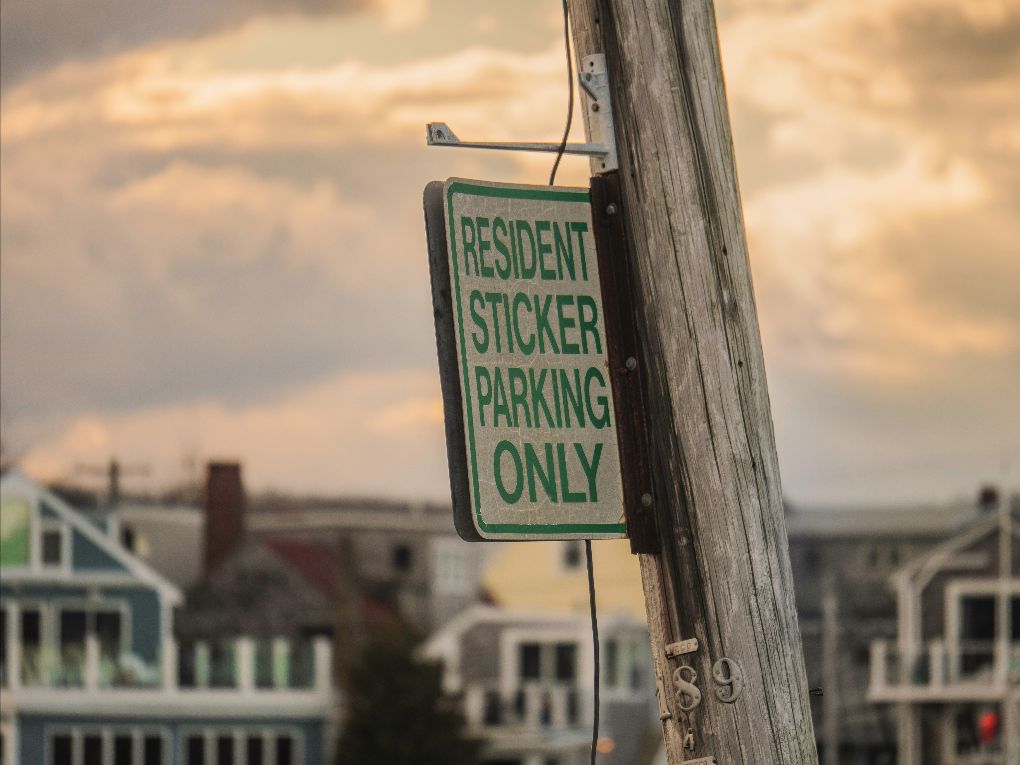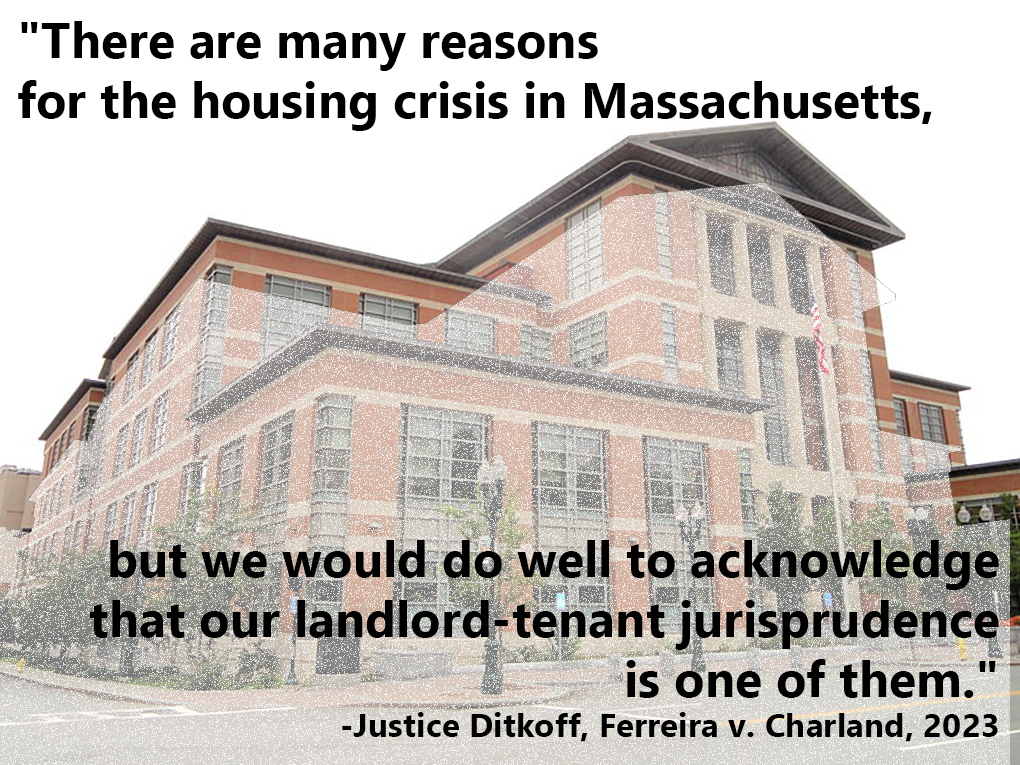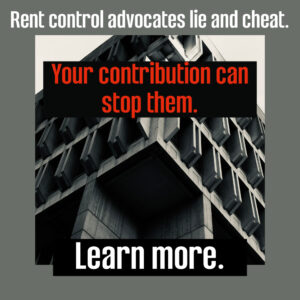The Complete Updated Guide to the Housing Crisis in Massachusetts
There’s a housing crisis in Massachusetts. While prices are going up and supply is dwindling across the country in relation to demand, this is particularly evident in desirable, high-cost areas such as the Bay State.

Massachusetts is a desirable place to live, particularly Boston and the surrounding area. But high rents and apartment scarcity make finding a home here difficult. (Lic: Venti Views for Unsplash)
The intent of this article is to provide a reference point for the ongoing factors that influence the state of housing in Massachusetts. There are many causes. We offer some short explanations here. If you want to learn more about a particular subject, you will find links to relevant, more in-depth articles as you read.
Cause 1: Local opportunity creates high demand.
Massachusetts is a desirable place to live for a laundry list of reasons.
This part of the Earth has been free from war and occupation for a long time (even if people who lived here have died in conflict elsewhere). Massachusetts has no history of famine and is relatively free of major natural disasters such as wildfires, earthquakes and tornadoes. (We know there have been exceptions, such as the 1953 tornado that remains one of the deadliest in history.) We do get a lot of snow, but we also plan for it, so it’s rarely devastating.
Socially, Massachusetts has some of the strongest protections against discrimination in the country. With lower than average violent crime rates and the third-lowest property crime rate in the country as of 2024, it’s also considered a safe place to live.
Massachusetts’ commonwealth constitution guarantees everyone access to education. It is home to some of the best universities in the world and has a strong tech industry, along with other major sectors such as medicine, engineering and finance.
Though domestic migration numbers are down, an increasing birth rate and higher international migration numbers have recently boosted the population of Massachusetts back to more than 7 million people. Like the rest of America, there’s no official language that acts as a barrier to entry or to access services.
Economically, we have our ups and downs. But even in times of relative downturn, our large nonprofit employers like hospitals and universities, sitting alongside major for-profit companies, have made us resilient.
All these factors put a Massachusetts home in high demand.
Cause 2: Problems outside Massachusetts create even more relative demand.
The overwhelming trend across all countries and all human history is urbanization. It is very hard to thrive, let alone survive, alone in nature. Massachusetts has its wild parts, but no place within state borders is very far from the land we've changed to suit human needs. The trend toward increased demand is only going to continue as climate change and conflict makes it harder for others to survive and thrive elsewhere.
According to a 2023 report from Massachusetts Climate Chief Melissa Hoffer, “[t]he Northeast is projected to receive significant migration from people fleeing areas impacted by severe heat waves, drought, storms, crop loss, water scarcity, and other impacts of climate change.”
We have seen this already with the migrant crisis of 2023 to 2024.
Cause 3: Housing supply is artificially constrained.
Low housing supply against increasing demand means higher housing costs. What would be naturally occurring affordable housing becomes expensive. You may think Boston is a very densely populated city, but the fact is, even our state’s capital city is largely zoned for single-family homes by right. You can check the data for yourself at the Metropolitan Area Planning Council’s (MAPC) zoning atlas page.
“You look at Boston…half of it is effectively single-family,” MassLandlords Executive Director Doug Quattrochi said in a 2024 rent control webinar. “You look at many towns in the surrounding suburbs, they’re completely, overwhelmingly, entirely single-family…even places you think of as being very dense are not actually allowing new construction of housing.”
Things like minimum lot size, frontage and setbacks all affect what kind of housing can get built, and how much of it. That may not make as much of a difference in rural communities in the western part of the state, but for the increasingly connected conurbation inside I-495, single-family zoning restrictions are a major constraint preventing people from being able to afford to live near their work. Even in the Springfield market, though, traffic patterns show people live and work in very different places.
That’s assuming they can find a home that meets their needs in the first place. The general difficulty in permitting renovations means much of our housing stock remains mismatched to today’s market. Large families today are less common than they were in the past, so we have a lot of students occupying these large spaces. Family housing remains a gap, especially in school districts with good opportunity.
Zoning and permitting provide useful benefits to the community, but by focusing less on the desired outcome and more on the process, many desirable outcomes are forestalled.
Exclusionary zoning means not everyone will get a place to live.
Massachusetts has remained historically stagnant with land use restrictions. In other words, the same zoning laws that were enacted years ago are largely still law today. Many such laws allow for single-family zoning restrictions, now pejoratively referred to as “exclusionary zoning.”
Government efforts to combat exclusionary zoning have met with stiff and increasing resistance. In 2020, then-governor Charlie Baker signed Chapter 358 of the Acts of 2020, a rare modification to the Zoning Act. It allowed cities and towns throughout Massachusetts to approve certain zoning changes without a supermajority vote. However, that essentially swept disagreement under the carpet. The long-standing opposition to density became better organized, particularly for density changes to single-family neighborhoods.
For example, the 2022 MBTA Communities Act set additional multifamily zoning standards for communities that benefit from MBTA transportation. Penalties for not complying with these new standards would lead to loss of state funding for other projects, but some communities are still strongly opposing the act’s requirements. This is even after the state substantially watered down the initial housing production targets.
Accessory dwelling units (ADUs) have been looked at as a way to add housing units to single-family plots of land. However, when we surveyed the cities and towns of Massachusetts, some do not allow ADUs at all, and others have owner-occupy restrictions or require special permits. More towns are revisiting the issue, though some places, such as Lowell, seem hopelessly against the idea.
People who already have housing strongly resist changes to their neighborhoods.

Parking requirements eat up a lot of land that could be used for housing. But access to public transportation is vital for reducing our reliance on cars. (Image: Leon Bredella for Unsplash)
Cause 4: Car dependency creates a feedback loop between parking spaces, low density and lack of transit.
Land used for housing cannot be made denser unless people can get to it. But because the land is not densely settled, alternatives to car travel (like public transit) are economically infeasible. So, we remain stuck in low-density land use patterns. Parking lots take up huge sections of most Massachusetts downtowns and suburbs.
In Massachusetts, we generally lag far behind European cities in terms of infrastructure for bikes, motor scooters, buses, streetcars, subways and trains. These all require a certain minimum density of households per square mile to work. Only a few places, like Cambridge and Somerville, stand out as positive examples. But even here, local opposition to change creates delay.
Parking spaces have become such an important part of housing they have been recognized as hindering the creation of more housing units at the highest levels for the last five years at least.
Land closest to public transportation and other amenities is often more expensive than land in outlying areas. When builders construct affordable housing, they often choose to build on the outskirts of cities. This makes for cheaper construction but also forces residents to rely on automobiles. More parking spaces means fewer units on that lot, and then greater demand for parking at all the places these new residents need to travel.
For all these reasons, transportation affects housing. Lack of car alternatives sustains low density land use patterns and prevents us building alternative means of transportation.
Cause 4: Climate change is flooding and devaluing the land we live on.
Sea levels are rising at an accelerated rate due to climate change. But sea level rise is not the greatest threat: It’s rainfall. Rain falling faster from warmer air puts more properties at risk for damage from flooding even far inland. In 2023, Montpelier, Vt., faced catastrophic damage after a major flooding event that can be linked to climate change. Leominster also flooded later that year. All river-adjacent communities are at increased risk. Because New England was built on hydropower, a large amount of rental housing is at risk of river flood from heavy rainfall.
You can check the National Flood Insurance Program’s site and see if your address is at risk for flooding. You may be surprised to learn areas you thought safe from flooding are actually in areas at heightened flood risk. Professional investors now devalue such lots.
Additionally, shorelines are eroding quickly, spelling disaster for our coastal regions. On Cape Cod, some beaches lose 3 to 20 feet a year from erosion and sea level changes. As the sea moves more inland, that’s less buildable area for homes.
Plus, as climate change causes more natural disasters throughout the country, home insurance rates are spiking nationwide. This means that the housing that is available becomes even more expensive to occupy.
Climate change is changing our land use patterns regardless of whether we can adapt to this.
Cause 5: Housing is expensive to build, maintain and operate here.
People look at rising rents and are sometimes quick to blame landlords for exploiting the housing crisis for financial gain. But remember, it’s a false comparison to equate rents with mortgage payments. The estimated monthly payment for just a mortgage doesn’t include everything landlords pay to keep a home running. Rent covers the mortgage but also property taxes, homeowners’ insurance, utilities, upkeep, repairs, legal fees and major upgrades (sometimes called “capital improvements”).
When a landlord rents a property out, that rent number must include the base housing costs, but also all of those expected and unexpected contingencies, like if a renter becomes unable or unwilling to pay their fair share. Plus, ideally, a landlord should be compensated for the work required to do all this. This is why monthly rents can appear higher than a mortgage payment for a similar property.
Labor costs are especially daunting. Because of the way we license skilled trades, plumbers and electricians are assured of a limited pool of competitors and charge hourly rates that keep them very well compensated. A single plumber visit can easily absorb a month’s gross rent depending on the nature of the problem.
Housing is expensive.
Cause 6: Preventing climate change will temporarily make new housing even more expensive.
Getting older homes more energy efficient to combat climate change is very important, but retrofitting is complicated and expensive. The biggest expense is staff and contractor time to relearn how to make homes just as good and long-lasting as with older technology.
Gas boilers, for example, have a well-deserved reputation for reliability and affordability. Many plumbers have been slow to adopt heat pumps, which are more complex. More complexity means more opportunity for something to break. But gas boilers cannot operate past 2050, the deadline past which all of Massachusetts must be net-zero in carbon emissions. So we have to learn. Learning is expensive, takes up valuable time that would otherwise be spent doing, and gets harder as we age. So in the transition, many developers and contractors rightly have pointed out that their costs are going up due to stretch codes and energy codes. These are temporary costs in the big picture, but they are real costs and will be with us for the next decade at least.
Climate change requires us to relearn old habits, and learning takes time that must be paid for somehow. Complex building systems require new materials and technologies that start out more expensive.
Cause 7: Mismanagement of rental assistance leaves us lacking a housing safety net.
The number-one reason renters and their advocates discuss the housing crisis relates to the failed safety net. There are two kinds of rental assistance: long-term and temporary.
For example, the state Residential Assistance for Families in Transition (RAFT) program has provided temporary amounts (for instance, in 2024 up to $7,000 per 12-month period) to help families avoid losing housing. Temporary rental assistance programs can be used to pay owed rent, put down move-in funds for a new rental, and in some circumstances to purchase household needs such as furniture.
Section 8 and the related Massachusetts Rental Voucher Program provide long-term assistance for an open-ended timeframe. They guarantee that as long as a renter remains eligible, they will pay no more than one-third of their income to rent.
These should be primary safety nets for renters experiencing temporary or long-term lack of economic competitiveness in the housing market. But these programs are chronically under resourced and public oversight is next to impossible.
During the Covid-19 pandemic, the state received billions of dollars in assistance for the RAFT program. The influx enabled RAFT to temporarily increase limits to 18 months of rent assistance per household. However, in some cases it took months for families to receive assistance. This went on for several years after Covid shutdowns began. In other cases, applicants never got assistance. Only half of all applications were granted, and one-third were “timed out” for alleged lack of documentation.
When we tried to get information about timeouts, we were stonewalled by the Executive Office of Housing and Livable Communities (EOHLC). We filed a lawsuit to try to force them to comply with our public records request, but our case was ultimately dismissed. That’s millions of dollars of rental assistance unawarded and unaccounted for.
The waitlist for a Section 8 voucher is approximately 10 years. Temporary RAFT payments rarely are adequate.
Cause 8: Lack of targeted enforcement against bad landlords leads to unpredictable housing quality and policy.
There are landlords who do not keep their properties up to code, and even if kept up to code, building systems (or lack thereof) can have deadly consequences. Municipal building departments, divisions of inspectional service and boards of health are supposed to enforce the sanitary code. In actual practice, enforcement is under-resourced and patchy.
There are also housing providers who don’t understand you can’t take a security deposit and invest it in cryptocurrency. Usually, legal deficiencies like these only come to light in the context of a court proceeding (like eviction) or a discrimination complaint. If a landlord avoids court, most legal deficiencies are never noticed or corrected.
Our attempts to raise the bar by creating a market enforcement mechanism (Certified Massachusetts Landlord™) has received zero support from the towns and housing authorities we’ve discussed it with.
Lack of landlord compliance and behavioral enforcement doesn’t just make law-abiding housing providers look bad. It also feeds back into the creation of more lopsided pro-renter policies. Any single landlord misbehavior hurts the renter who resides there. And it also becomes a rallying cry for sweeping new anti-landlord housing policies.
Bad landlords who cannot be made compliant substantially worsen opportunities for good landlords.

When landlords act in good faith to fix problems and still lose their case, Judge Joseph Ditkoff wrote in a dissenting opinion, “our decision adds to the steady judicial drumbeat warning every small residential landowner that, whatever you do, do not rent out your property.”
Cause 9: Lack of enforcement against bad tenants drives good renters and housing providers out of the market.
We’ve written a lot about the free rent trick, but there are also tenants who violate their lease and drag things out in court in other ways. If a renter gets into housing and decides to stop following the rules outlined in the lease, the landlord has very little recourse.
For instance, if a renter is hoarding and is unable or unwilling to seek help to fix the problem, the landlord will need to file a for-cause eviction, not for their hoarding disability, but for the unsanitary conditions of the unit. For-cause evictions are notoriously difficult to win.
Standards of evidence in court make it very hard to evict for misbehavior. For example, the for-cause case of Gwendolyn Property Management v. Goodwin, Johnson (2021, 21H85SP001694) was brought to evict renters for smoking in a no-smoking building. Four witnesses were lined up. But the judge threw it out as hearsay. A no-cause-stated eviction later got the renters out, after much delay.
In another case, Ferreira vs. Charland, a landlord was rendered homeless when a renter failed to move out on time and raised a complaint about improper water billing. After years in court, despite the landlord always acting in good faith and even repaying triple damages for the water bill during the court proceedings, they lost their case. Judge Ditkoff wrote, “our decision adds to the steady judicial drumbeat warning every small residential landowner that, whatever you do, do not rent out your property. There are many reasons for the housing crisis in Massachusetts, but we would do well to acknowledge that our landlord–tenant jurisprudence is one of them.”
Eviction is difficult, expensive and almost entirely dependent on who shows up.
Eviction contributes to the housing crisis in Massachusetts because eviction is expensive, and the courts don’t move quickly. Since the pandemic, average court time has been 90 days, and 95th percentile has been 300 days. This means roughly 1 in 20 cases lasts a year.
Setting aside mediations, which are more complex to study, the primary reason a landlord wins is a renter fails to show up. The primary reason a renter wins is because the landlord fails to show up. This really dissolves the whole issue of eviction into a crapshoot for both parties.
If both parties show up and money is at stake, the landlord will eventually win. Court judgments are issued in only approximately 3% of eviction cases.
If/when a landlord wins, if the former tenant is on public assistance of any kind, they are considered “judgment proof.” In other words, the landlord might never see that lost rent repaid. Repaid judgments are unusual.
Landlords don’t want to evict anyone we don’t have to. One way we increase our odds of staying out of court is to carefully screen our potential renters. We’ve developed an applicant qualifier that applies the same standards to every applicant. Applicant qualifiers didn’t exist here 20 years ago. It used to be a handshake and a warning: “Pay the rent and follow the rules or I’ll evict you.” But as evictions have become harder and harder, landlords have had to screen tougher and tougher. This creates additional scarcity. Even if there is rental housing available generally, it may not be available to every applicant.
In general, the tougher we make it to remove a bad tenant, the more we increase rental application difficulty. When the state tries to eliminate rental application checks, for instance, with eviction sealing, it invariably creates tougher screening criteria on other metrics.
Bad renters who cannot be removed substantially worsen housing availability for good renters.

What’s going on in our state and city governments? We need more transparency and an overhaul on how policy is made. (Image: Unsplash)
Cause 10: Housing policy is created without expertise and is heavily ideological.
Massachusetts needs to reform how it creates policy and legislation, which is typically deeply partisan and reflects only one side of an issue (e.g., housing advocates vs. NIMBYs, renters vs. landlords). Also, lack of candor creates diverging narratives around the success of any one initiative. Finally, lack of expertise leads to unintended consequences.
Elections are a primary weakness. In first-past-the-post elections (compared with something like ranked choice voting), a Massachusetts candidate can be elected with a core group of partisans (e.g., renters). This puts people in power with no incentive to include the opposition. Single-family owners outnumber renters 10 to 1, and will remain a primary opposition without a seat at every housing table.
Lobbying compliance is also a primary weakness. Public officials may be wary of business interests asking for something, but it seems few have that same concern when a nonprofit asks for a meeting. But nonprofits have financial interests too. Pro-renter lobbying takes place via funds distributed via the Massachusetts Legal Assistance Corporation. Legal services attorneys have called for tougher evictions in the form of an expanded Housing Court, taxpayer funded legal aid, eviction sealing and more. If these attorneys accurately reported their lobbying, their financial interests would become plain. Also, their organizations would become ineligible for grant funding. They do not accurately report.
Lopsided policy creation creates unintended consequences. We know, for example, that rent control has historically not worked.
A primary weakness is that our laws are drafted without expertise. They usually start without any outline or statement of objective. They are drafted by legislative aides or citizens without technical expertise in housing and transportation. The public hearing process does not require testimony be sworn in, so people make up stories or facts. Would-be participants must plan to wait on average four hours, or for some issues eight hours, before their chance to speak, so only the most zealous persist. Committee chairs often text or leave during testimony, paying little attention to what is said. There are no version numbers on bill text, and so very little iteration or traceability. There is no way for the public to see or comment on proposed changes. Edits happen behind closed doors. Over 90% of all bills fail to pass each session.
One last weakness is the apparent lack of elected officials’ ability to say, “I don’t know.” Lack of candor is a major deterrent to approaching the truth of the housing crisis. It is also a major limitation that every pilot program we try must be declared a success, even when most programs do not improve outcomes in a statistically significant way. Accurate measurement of a noisy housing market requires the application of scientific principles. Science is almost never used in housing. Many say "studies show" without a single peer-reviewed citation to back it up. Most "studies" cited are actually political pieces with cherry-picked data or conclusions that do not follow from the facts. Emotion and anecdote rule the day.
Lack of transparency creates room for corruption by special interests.
For a state that prides itself on its inclusivity, Massachusetts’ government is frustratingly opaque. For example, the state’s open meeting law does not include the state legislature. It is also exempt from the public records law.
All of this opacity weakens the democratic process and makes it harder for us to see who’s standing in the way of consensus on needed reform.
Landlords aren’t getting a seat at the table.
Landlords are excluded at every turn, primarily because it is not necessary to involve us to win elections.
In 2022, for example, Boston mayor Michelle Wu announced the formation of a rent stabilization advisory committee. There were no landlord groups on the committee. Going back to the transparency issue, we have no idea how this committee was formed. We filed a lawsuit against the city of Boston to try and get that information. Having no housing provider groups on the RSAC was unbalanced and shortsighted, and the policy work that resulted ultimately ignored rent control history and peer-reviewed studies.
Small landlords provide two-thirds of the housing in Massachusetts. If we don’t have a voice when policy is being determined, the public are left with no idea what it takes to provide housing, let alone create more of it. But we are not the only voice that matters.
Renters aren’t getting a seat at the table.
There are so many nonprofits in Massachusetts that claim to represent renters. Would it surprise you to know that these nonprofits are run by homeowners? Some are even themselves landlords. A well-known advocate at City Life/Vida Urbana is a landlord. Half of the people who signed the rent control ballot initiative are homeowners.
All of these same lobbying and partisanship pressures will always exist. The question is how to bring expertise into policy making and to ensure that laws enacted reflect the best understanding of all of society at that time.
Summary
The housing crisis is the result of a complex system failing in a core set of ways. We have not listed many solutions here because any proposed solution is only as good as the stakeholders who contribute, and we are but one voice. A solution to any one of the issues raised likely requires a complex and deliberative set of discussions among diverse and disagreeing stakeholders. Any solution also requires careful consideration of unintended consequences.
Suffice it to say everyone deserves access to safe housing. The sooner we can all work together, the faster we can really start tackling the housing crisis in Massachusetts.





